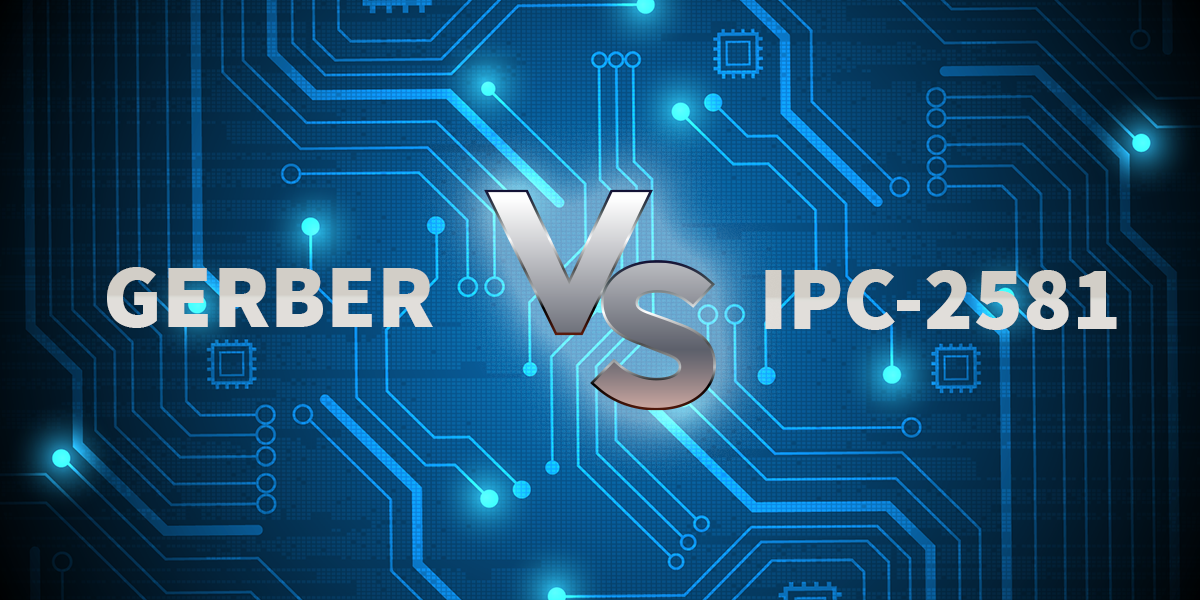A. Comparison of Development History
1. Gerber
- Gerber originated from the plot output format of the CAD software developed by the Gerber System Plotter Company in the US in 1960.
- It was released in 1980 as A Subset of EIA RS-274-D Plot Data Format Reference Book, and gradually became the standard format.
- In 1998, an extended version of the RS-274X Format User's Guide was released, which included an additional data block, the parameter block, and it's the more commonly used format today.
- The latest version Gerber V2.0, also known as Gerber X2, was launched in 2014 and it is an upgraded version of RS-274X, a Gerber with attribute information.
- The proposal for Gerber X3 has already been submitted in 2019, a version that includes assembly information.
2. IPC-2581
- In 1998, IPC issued GenCAM 1.0, a central product data standard.
- In 2002, IPC issued GenCAM 2.0, also known as IPC-2511B, which is the first XML-based version.
- In 2004, IPC developed and issued IPC-2581, which covers the previous content.
- In 2013, IPC issued the IPC-2581B, adding features such as cascading switches.
- In 2020, IPC issued the IPC-2581C, which includes bidirectional DFX data exchange.
Both data exchange formats have long histories, and each version boasts significant breakthroughs or extensions in features. They have been maintained and updated up to now.
B. Comparison of market conditions
Gerber, as it was developed earlier, has the lion's share of the market. Current existing EDA software and PCB manufacturing equipment support the use of this format. However, as the format is only maintained and promoted under the license of the company, this may set some limitations on commercial articles and patents.
IPC-2581 is a late-comer to the party with the aim to solve the inherent problems with Gerber, which means it meets the needs of industrial IoT and data-based development better than Gerber. By promoting its affiliate membership program, IPC-2581 has become more widely known. However, the membership application needs to be done by all the upstream software and equipment vendors to downstream manufacturers, leading to some difficulties in real market applications.
The inherent market differences are not set in stone. Both of them have their merits and demerits in terms of market performance. It's all about who can be more flexible, adapt to market demands, and stick it out to the end.
C. Comparison of data format
1. Data format
Gerber is an ASCII format containing control codes and coordinates. It can also be EBCDIC, EIA, or ISO codes. However, it is not easy to decipher and hence requires specialized knowledge or tools for accessing.
IPC-2581 is an XML format with a more systematic organization. It is easier to read and understand, and users at different levels can learn and master this basic usage.
2. Documents and types
Gerber format files include their aperture and parameter files in txt format, art graphics files, DRL drill files, IPC test point reports, and other file types. Special software is required to open and recognize them.
IPC-2581 has only one XML file type and organizes different contents under one title.
3. Manufacturing information
Gerber's netlist and BOM table are independent to each other, so a separate chart needs to be defined to relate such information, and even though the X2 version had added parameters for assembly, it has not met the backward compatibility requirements.
IPC-2581 has integrated information that can show the netlist used for testing, the different BOMs used for procurement and assembly, and the associated assembly parameters.
4. Data information conversion
Given various file formats, Gerber needs to convert the intermediate data formats and verify the output configuration of EDA software to check if there is any difference from the configuration of production software.
For IPC-2581 output, different formatting configurations are present as a selection, and given its high data security, its standard format are readily accessible for designer and manufacturer DFX.
It is true that Gerber has some limitations, but it has been constantly improving, whilst even though IPC-2581 seems to have more of a technological edge, but technology alone is often not enough.
Today, we have made some comparisons between Gerber and IPC-2581 in terms of development history, market conditions, and standard data formats- however, these comparisons only serve as a brief discussion for a short period of time. As was previously stated, Gerber is about to release its version of X3, whilst IPC-2581 will face a competitor in the XML data standard format, ODB++. Therefore, comparing these PCB data exchange formats must be compromised based on the actual situation and the development needs of your company. As they say, "the right one is the best one".

